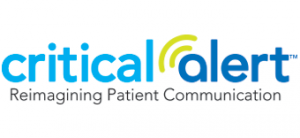Clinical Interruptions and How to Alleviate Them
Tony Natale
Let’s Talk About Clinical Interruptions and How We Can Help
Today’s acute care nurses are carrying a heavy burden, punctuated by an ever-increasing workload, high patient to staff ratios, not to mention the impact of the COVID-19 pandemic. Add to this, legacy challenges associated with interruptions, long shifts and other workplace hazards. It is easy to come to the conclusion that nurses need help!
While we might not be able to remedy many of these challenges, we do have something to say about clinical interruptions.
On average, every nurse working within our nation’s hospitals is being interrupted 10 times an hour. These clinical interruptions are occurring while nurses are engaged in patient interactions, monitoring conditions, admit/discharge, taking orders from MDs, starting IVs, prepping or assisting in procedures, rounding, etc. Although interruptions are a part of the caregiver’s job, they are, most definitely, contributing to medical errors.
Where Are These Interruptions Coming From?
For RNs, interruptions come from every direction! They come from patients and their families, from fellow staff members, from phones and devices, etc. Hospitals can be noisy, crowded, stressful places and these distractions can cascade throughout a given shift. Cognitively speaking, one can only do so many tasks at any given moment.
Let’s Focus on Medication Errors
The NIH estimates that preventable adverse events lead to nearly 100k deaths a year and cost the US healthcare system over $20 billion annually. One of the most common types of adverse events is related to medication administration, which comprises tasks singularly performed by RNs.
When medication mistakes happen, there’s the cost of care needed to re-stabilize the patient. Then, there is an associated increase in length of stay by nearly two full days. The cost of these mistakes and their subsequent interventions – at scale – pose one of the highest ongoing financial liabilities for health systems. And, they are largely preventable.
So, What Can Be Done?
In a recent study published in the Journal of Patient Safety, a team of researchers surveyed Patient Safety Reporting System (PSRS) data from a hospital enterprise between 2013 and 2016. While the findings were startling, demonstrating just how insidious and rampant clinical interruptions are within our healthcare system, there are some clear conclusions drawn, perhaps pointing to a way out of this mess.
It is difficult to access the impacts of clinical interruptions using traditional observational studies. The authors, instead, took a novel approach by reviewing nearly 80k Patient Safety Event (PSE) reports. PSEs are an essential (and required) component of a hospital’s continuous clinical reporting, quality assurance and governance programs. Tied to CMS, Joint Commission and other regulatory bodies, PSE reporting provides insight into medication errors, adverse events and other risks to patient outcomes and safety.
The report found that interruptions increased task time, lengthened care delivery, raised stress levels for caregivers and patients alike and created an atmosphere of frequent distraction, raising the likelihood of medical errors. Not surprising, nurses were disproportionately affected by interruptions, comprising 50% of all reports. Additionally, for these nurses, over half of the reported incidents occurred while ordering, preparing and administering meds.
To further put this into context, a quality improvement study published in Medicine in 2017 showed a two-fold increase in the risk of death associated with medication errors. While hospitals can look to fail safes such as pharmacist interventions or physician overrides, these do not fully mitigate the potential harm to patients or the financial impact to the organizations.
It makes sense that by decreasing interruptions, particularly during medication administration, hospitals can reduce cost in both lives and money.
Traditional Resolutions
When it comes to limiting the impact of clinical interruptions, health leaders have a number of avenues for providing corrective actions through training, creation and enforcement of new policies and procedures, better documentation, more oversight, etc. Clinical leaders can promote and reinforce strategies such as distraction free zones, nurse buddies, do not disturb (DND) policies, accept/reject & auto-escalation protocols, among others. These can all lead to better supported nurse teams with continuous reinforcement from clinical and quality leadership.
But More Is Needed
While these traditional interventions are necessary for individual staff corrections, they do not, however, address areas for wider, systemic improvements.
This is where your IT teams and technology vendors come in. The clinical software ecosystem (its complexity and scope) partially bears responsibility for the increasing rates of clinical interruptions, particularly among nurses. In an average month, a 300-bed hospital may generate 28k nurse calls, nearly a million alarms from medical devices and thousands of notifications from EHR, PACs, lab systems, etc. These notifications have to go somewhere. Unfortunately, they most often end-up being sent on to the care teams assigned to the patients… AKA the RNs.
Here’s How We Can Help
Technology vendors, the ones who propagate all of the rings, dings and buzzes, can offer some assistance reducing the volume of notifications through:
- Prioritized assignment of alerts, alarms and events based on roles – This ensures that the RNs are sent ONLY the messages they are required to handle. The rest of the calls are sent to allied health or ancillary staff.
- Centralized call answering for nurse call alarms – Rather than sending all notifications emanating from the patient room to the assigned RN, triage them at the unit, hospital or enterprise level. Shifting the responsibility of concierge away from your nurses reduces unnecessary distractions and keeps them operating at top of license.
- Rules-based alarm suspension – Suspending alarms for a definable period of time rather than sending every artifact directly to the caregiver creates breathing room for your nursing staff. Once the alarm persists and is deemed actionable, then have the system route the alarm notification.
- TRUE device interoperability – IT teams need converged platforms to meet the clinical demands emanating from nursing and medical leadership as well as meeting the financial and efficiency goals set by the C-Suite. Integrating notifications from nurse call systems, medical devices, EHR, smart beds into a singular rules-engine will go a long way in reducing the amount of unnecessary clinical interruptions.
- Enhanced clinical workflow configuration – Clinical leaders require flexibility within their communications and clinical collaboration tools. No vendor can anticipate the variability of workflow within each unit or across a healthcare enterprise over time. What they can do, however, is make it easy to configure workflows, change priorities, re-define roles, make staff and device assignments, etc.
- More comprehensive analytics – Clinical leaders require data from their clinical communications solutions. They need insights into what is working and where gaps are occurring in order to make demonstrable corrective actions and feed their continuous process improvement initiatives.
Our hope with this blog is to show that the issue of clinical interruption is well documented and that there are practical ways of mitigating the associated risks of preventable medical errors. We also hope to convey that nurses, clinical leaders and IT and support teams are not facing this challenge alone.
Tony Natale
Director of Sales
Tony has over 30 years’ experience in sales and sales management with over a decade in the nurse call industry.


